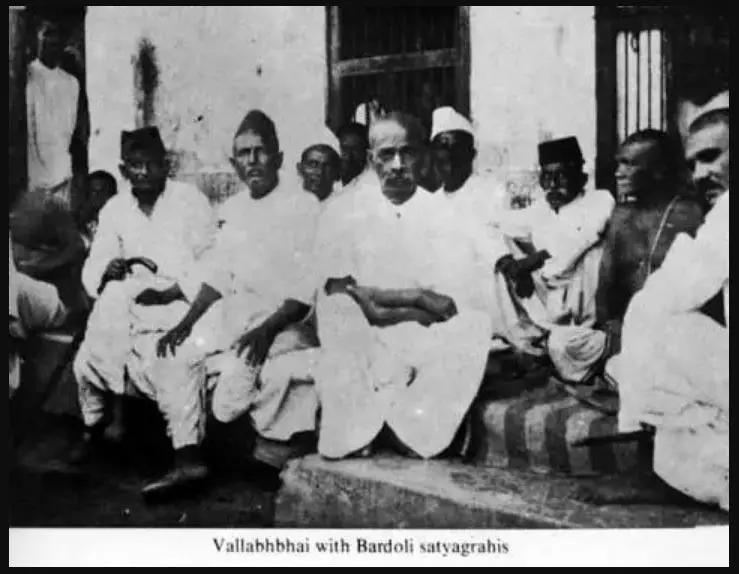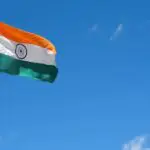Table of Contents
About Bardoli Satyagraha | UPSC – IAS
- The ‘Merta Bandhus‘ (Kalyan Ji and Kunwar Ji) and Dayal Ji of Bardoli started the movement from 1922 AD in support of the farmers. Later it was headed by Sardar Vallabhbhai Patel.
- In 1920 Bardoli taluka of Surat (Gujarat), the movement of ‘Lagaan’ nor payment was started by the farmers. Not only the land-owning peasants of the ‘Kunbi-Patidar‘ castes participated in this movement, but also the people of the ‘Kaliparaj’ (Black skinned people ) tribe.
About the Crisis | UPSC – IAS
- In 1925, the taluka of Bardoli in Gujarat did not suffer financial troubles. However, the government of the Bombay Presidency had raised the tax rate by 22% that year, and he despite petitions from civic groups, refused to cancel the rise in the face of the calamities.
- The situation for the farmers was grave enough that they barely had enough property and crops to pay off the tax, let alone for feeding themselves afterwards.
Gandhi ji’s Contribution
The main caste of farmers ‘Kunbi-Patidar’ in Bardoli with 137 villages and 87,000 population started to organize under the leadership of Kunwar Ji and Kalyan Ji Mehta from 1908 AD. This organization published magazines called ‘Patidar Yuvak Mandal’ and ‘Patel Bandhu’.
Explaining the inter-relationship between the peasant struggle and the national independence struggle, in reference to the Bardoli peasant struggle, Gandhiji said that :-
Whatever the Bardoli struggle may be, it clearly is not a struggle for the direct attainment of swaraj. That every such awakening, every such effort as that of Bardoli will bring swaraj nearer and may bring it nearer even then any direct effort is undoubtedly true.
Sardar Vallabhbhai Patel’s leadership
Sardar Vallabhai Patel was the star attraction of the Bardoli Satyagraha in Gujarat, held to defy the exorbitant indigo land tax. On February 4, 1928, Vallabhbhai Patel took the leadership of the Bardoli peasant satyagraha. First a letter was written to the government against the increased revenue, but there was no positive response from the government.
- As a result, Patel organized the farmers and told them not to pay the their taxes.
- Then, He divided Bardoli into several zones – each with a leader and volunteers specifically assigned. Patel also placed some activists close to the government, to act as informers on the movements of government officials.
- Above all, Patel instructed the farmers to remain completely non-violent, and not respond physically to any incitements or aggressive actions from officials.
- He reassured them that the struggle would not end until not only the cancellation of all taxes for the year, but also when all the seized property and lands were returned to their rightful owners.
On the other hand , the moderate faction of Congress, through the ‘Surveillance of India Society’, requested the government to check the demand of farmers. A daily magazine called ‘Bardoli Satyagraha‘ was released. The Indian leaders of the Bombay Legislative Council resigned. It was also debated in the UK Parliament. Viceroy Lord Irwin. Also directed Governor Wilson of Bombay to expedite the matter. On the other hand, seeing the possibility of arrest of Patel , Gandhiji reached Bardoli on 2 August 1928 for alternative leadership.
Features of Bardoli Satyagraha | UPSC – IAS
In 1928, an agreement was finally brokered by a Parsi member of the Bombay government. The Government agreed to restore the confiscated lands and properties, as well as cancel revenue payment not only for the year, but cancel the 22% raise until after the succeeding year.
- Fearing things could go out of hand, the government set up the Maxwell-Broomfield commission to look into the matter.
- The revenue was reduced to 6.03%.
- The peasants were returned their confiscated land.
- Its success gave rise to Sardar Patel, becoming one of the main leaders of the indian independence movement.
Bardoli Satyagraha Criticism | UPSC – IAS
- The movement was focused on the conditions of the rich and middle-class farmers and largely neglected the poor farmers.
- It did not raise the problem of agricultural bonded laborer. The Kaliparaj tribe had to work as ancestral laborers of the upper castes under the ‘Hali system’.
- It is said that the movement was an experiment on Satyagraha as a method of freedom struggle. The basic problems of the peasants were not addressed and bonded labour continued.
Success of Bardoli Satyagraha | UPSC – IAS
The farmers celebrated their victory, but Patel continued to work to ensure that all lands and properties were returned to every farmer, and that no one was left out.
- Women also played an important role in this movement, with notable names of Bombay Parsi women Mithuben Petit, Bhaktiva, Maniben Patel, daughter Shardaben Shah and Shadra Shah. People of Bardoli were impressed by Patel.
- It was women of bardoli who bestowed the title Sardar for the first time, which in Gujarati and most Indian languages means Chief or Leader. It was after Bardoli that Sardar Patel became one of India’s most important leaders.
- The government had appointed Maxwell-Broomfield Commission to look in to the matter. After a rigorous survey, the raise in taxes was decided to be just 6.03%. But the basic problems of the peasants were left unsolved and bonded labour continued.
Hence the government reduced the rent to 6.03 percent. In this way, the Bardoli peasant movement was successfully completed under the leadership of Sardar Vallabhbhai Patel. Gandhiji said on this success, “Whatever the Bardoli struggle, it is not a struggle for the attainment of Swaraj, but every such struggle is trying to bring us closer to Swaraj”.


